Modern medicine does not cease to surprise with its discoveries, which allow you to correct many defects that occur on the human body, almost painlessly and without a trace. In this article, we will talk about removing by electrocoagulation of moles, warts papillomas and other problems.
Content
What is the method of electrocoagulation?
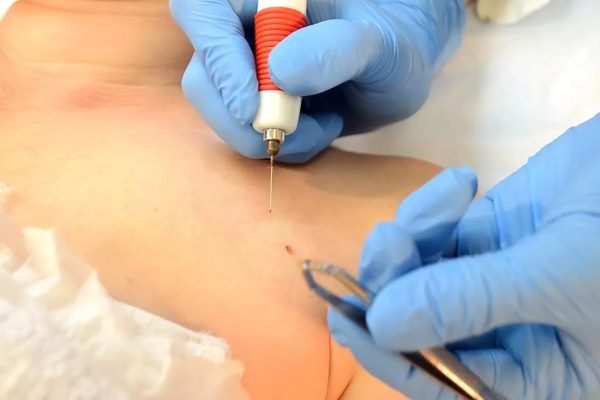
Electrocoagulation is a surgical method in which the pathological tissues of the human body are cauterized by alternating current of a very high frequency. Electrocoagulation is carried out using a special apparatus into which the electrode is mounted. The process of heating is controlled by a rheostat. The doctor presents the already heated device to the place, which is pathological, and it dies under the influence of high temperature, because the proteins are curtailed.
This is not to say that this is an outstanding discovery of humanity new. It turns out that another 3 thousand years ago, the ancient Egyptians knew that with the help of heat, tumors that occur on the skin could be treated. But the history of electrosurgery does not begin from there. Her ancestor should be considered Beckerel, who invented the electronics. The galvanic current began to be used by doctors only in the 19th century.
Modern experts believe that electrocoagulation is a revolutionary method that helps to save a person from many unpleasant phenomena on the skin and on the internal organs too.
Advantages and disadvantages of electrocoagulation
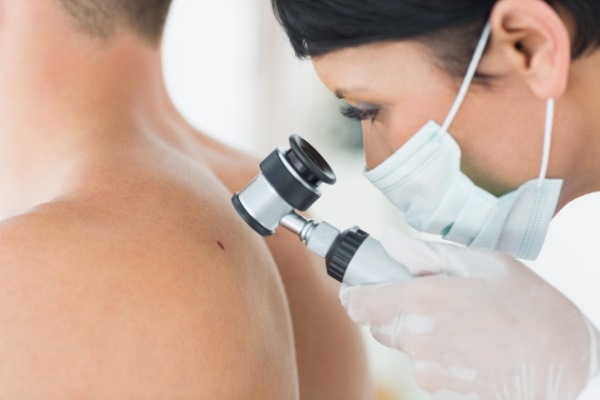
Electrocoagulation is a technique that has very many advantages:
- It can be carried out not only on the skin, but also in the body cavities.
- After electrocoagulation, infection of the place that was cauterized. A crust is simply formed on it, which in itself after a couple of days disappears.
- No special care for wounds after electrocoagulation is required. It will be necessary to treat it with antiseptic agents several times a day.
- The remote pathological place can be sent to a histological examination in order to identify its nature (it is malignant or not). For example, a laser technique for removing neoplasms does not allow this. Those who have not yet decided, use a laser or electrocoagulation, must be taken into account the moment.
- People leave a lot of positive reviews about electrocoagulation, because there are no practical traces left from it. Only one insignificant mark can remain after the procedure - a pigment that is practically not visible. And here, if you doubt that it is better - a laser or electrocoagulation, you can be sure, there is no difference. After both the procedure, there will be no trace.
However, not everything is so cloudless. There are several contraindications in which electrocoagulation is strictly prohibited:
- if you are infected with a hypertensive infection, which also develops at an active stage, then you cannot go through such a surgical procedure;
- if you have a malignant education, then it cannot be cauterized by electric shock;
- if you have a predisposition to the formation of keloid scars, then it is better to refuse electrocoagulation, because such traces will remain after it;
- if the neoplasm is located in the site of large blood vessels, then you should not give preference to electrocoagulation, because because of this, there may be a likelihood of abundant bleeding;
- if the neoplasm is festering or it is inflamed, then such a surgical procedure cannot be carried out;
- those who have a tendency to allergies cannot be agreed to electrocoagulation, because local anesthesia is used in the process.
In any case, even if you have contraindications for this procedure, then you should not sit at home and stretch time. Immediately go to the dermatologist, who, together with the oncologist, will decide how you need to undergo treatment.
How is the preparation for the electrocoagulation process?
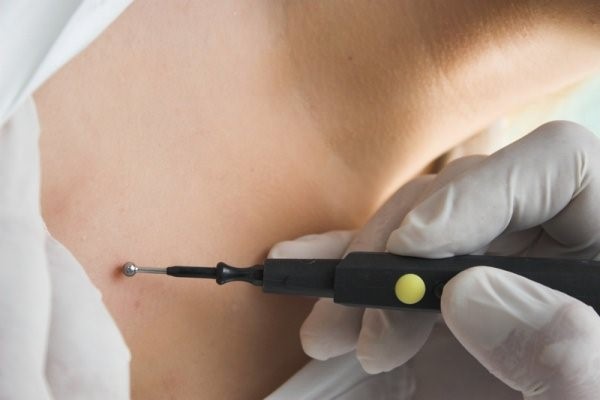
As a rule, it is not necessary to prepare for electrocoagulation by some special method. The preparatory process is carried out right before the procedure itself. What he is:
- The place that will be taken up by the current must be treated with special ointment or gel, which will affect the pathological place, such as anesthesia. Thus, layered fabrics will be protected from overheating.
- After that, the patient must lie down to the patient so that the doctor can work with a pathological neoplasm in the place where it is.
What is the process of electrocoagulation?
Removing the neoplasm by electrocoagulation is always a different process. The sequence of actions of the doctor will depend on what exactly needs to be removed. We will share with you the instructions of how to cauterize the current of different pathological places.
Electrocoagulation papillomas, warts, moles
- First, the doctor determines the shape, size and depth of papilloma. This is necessary in order for the specialist to choose an electric car.
- After that, the doctor invites the patient to take off all the jewelry, because he will work with the current, and jewelry can warm up and provoke a strong skin burn.
- Next, local anesthesia is introduced.
- Then the doctor burns out papilloma (the electrocoagulation of warts occurs in the same way), coagulating blood capillaries so that bleeding does not occur.
The duration of the entire electrocoagulation procedure is 5-20 minutes. Such a big time difference depends on whether there were complications during the operation.
Note that exactly the same scheme is electrocoagulation of moles. Only at the same time, the doctor takes into account whether the ordinary mole can be a melanoma - a malignant neoplasm. What factors the specialist must pay attention to:
- whether your mole has increased lately;
- is it not peeling, whether she was wrinkled;
- does your mole hurt (other unpleasant symptoms are possible - for example, itching);
- whether the mole is bleeding;
- whether the hair falls out of it (provided that they were originally there).
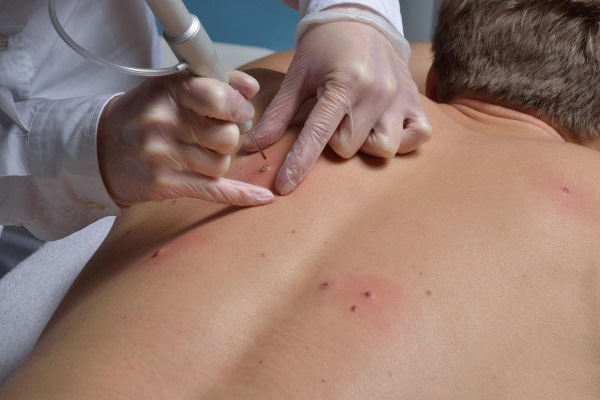
Electrocoagulation of the face
On the face, “vascular stars” may occur due to disorders that occur in the work of the nervous system. If the vessels do not receive sufficient impulses of nerve endings, then their clearance is narrowed, they are overwhelmed with blood, and their walls cease to be elastic and stretched for this reason. Thus develops a disease called rosacea, which is almost impossible to cure.
The vascular mesh on the face can only be removed if it significantly spoils your appearance to you. But it is worth remembering that whatever procedure you conduct, it will only give a temporary effect, because new vascular stars will still appear.
One of the most painless methods, which also has no side effects, is the electrocoagulation of blood vessels on the face. The technique of its implementation is the same as we described above. The only thing that the cauterization is carried out in several approaches, because the electrocoagulation of blood vessels is a rather complicated process and requires attentiveness. If you want to carry out an electrocoagulation of the nose (often it is here that warts are formed), then first you will need to take advice with Laura.
Electrocoagulation of the uterus
Electrocoagulation of the cervix is \u200b\u200bcarried out in case of erosion if some neoplasms of non-malignant nature appear on it. This procedure is also prescribed if a woman was diagnosed with cervical, subepithelial endometriosis, or she has opened bleeding. Electrocoagulation is prohibited for pregnant women and not giving birth to women, because due to it, scars can form on the cervix, due to which the delivery will be very heavy.
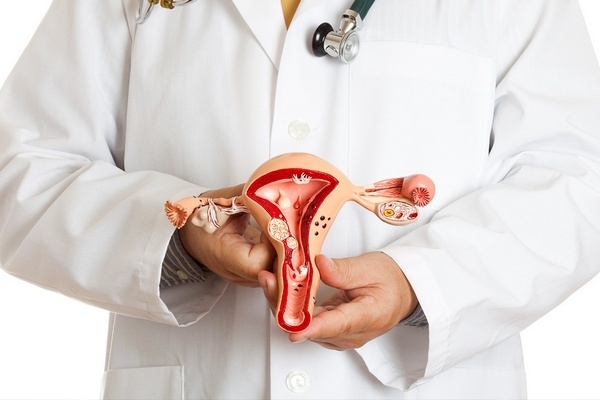
The procedure is mainly carried out 4 days after menstruation under general anesthesia. Local is used only if the lesion of the neck is slight:
- The doctor inserts the ball electrode into the cervix and begins to process the entire affected area with electric shock.
- After that, the doctor performs the incision in a circle of the neck with a needle electrode (this incision is shallow - 7 mm). It is important that only 3 mm reaches the incision in the healthy zone, otherwise the exposure to the electric current can be directed to healthy tissues, and this will increase the destruction.
Recovery period after electrocoagulation
The skin after electrocoagulation requires special care. It is prescribed by the doctor who conducted the procedure. As a rule, the place on the skin heals for one week. In some cases, 10 days. All this time, the wound is covered with a crust that protects the surface of the wound from various kinds of infections.
The crust should never be removed, otherwise a scar will remain after that. She will disappear independently precisely when necessary. All this time you will need to ensure proper skin care after electrocoagulation:
- lubricate it with sunscreen;
- process it with antiseptic agents so that the infection does not get into the wound.
In its place there will be a pigmented spot, which is completely imperceptible.
Electrocoagulation: photo
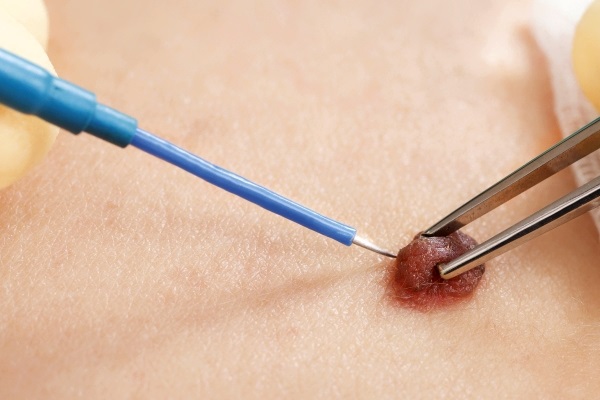
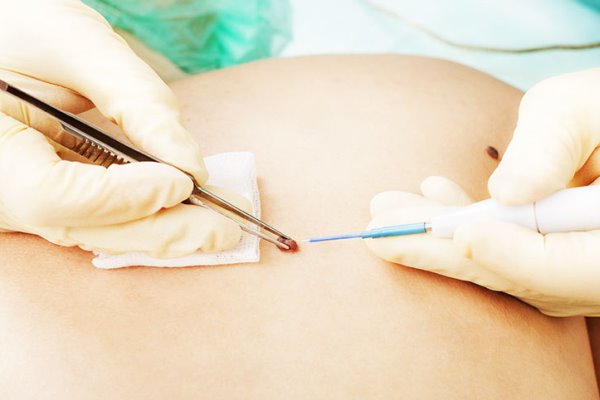
There is nothing wrong with this procedure. The recovery process is very fast and painless. Complications arise only in the most rare cases if the patient does not comply with the doctor's recommendations.









Comments
a couple of years ago, there was no side of metrogils from the same problem, there were no side effects ...
I’m not a fan of peeling at all, it saves from acne of metrogil, it also smoothes it ...
Great article! ...
I take the second course of the Capsules Climafite 911. The tides went very quickly. It became calmer, irritability went away and I sleep well ...
i also noticed - it is worth nervous, everything immediately affects the face. Therefore, I try to avoid conflicts and unpleasant people. Of the creams, I like Miaflow from wrinkles - smoothes not only small wrinkles ...